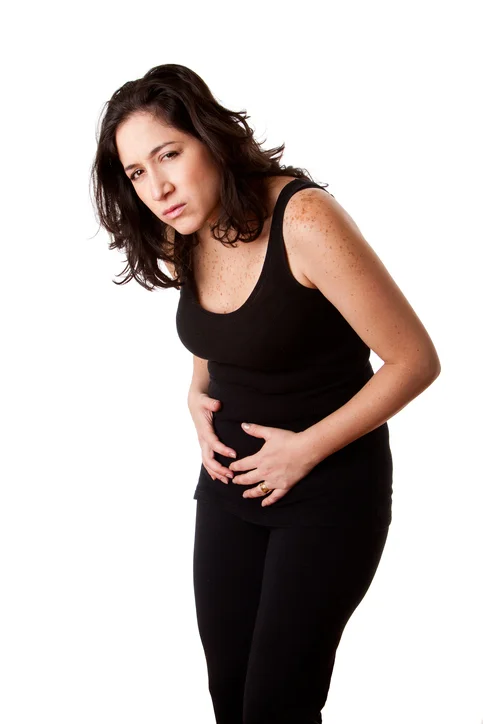Interstitial Cystitis
What is Interstitial Cystitis?
Interstitial cystitis, also called painful bladder syndrome, is a chronic inflammatory condition of the bladder wall characterized by pressure and pain above the pubic area as well as increased frequency and urgency of urination.
A healthy bladder expands until it is full and then signals the brain (through the pelvic nerves) that it is time to urinate. With IC, these signals get mixed up. Individuals feel the need to urinate more often and with smaller amounts of urine than most people. Since the bladder is inflamed and irritated IC can be an extremely painful condition to live with.
Since there is no cure for interstitial cystitis, the goal of treatment is to relieve symptoms. Some patients, however, do experience a length of time when they are in remission from IC. Some have reported being symptom-free for years before experiencing another flare-up. Managing the symptoms and living an anti-inflammatory lifestyle can help greatly if you are diagnosed with IC.
Who can get interstitial cystitis?
IC is most common in women. It generally develops in middle age and many people with IC also have other pain-related conditions, such as irritable bowel syndrome or fibromyalgia.
Causes
The exact cause of interstitial cystitis isn’t known, but scientists believe there may be multiple causes including:
- A defect in the bladder lining that allows harmful substances in the urine to come into contact with the bladder wall
- An overproduction of histamine and other potentially harmful chemicals by mast cells, a special type of cell that normally protects the body from allergic reactions
- Changes in the nerves inside the bladder
- Some type of autoimmune response in which the body attacks its own organs and tissue
- Sexual assault
- Car accidents
Symptoms
Symptoms of interstitial cystitis vary from person to person but can include:
- Bladder pressure
- Feeling like your bladder is burning
- Frequently visiting the doctor for UTI symptoms and more often than not, receiving negative test results for a UTI
- Pain ranging from mild to intense in the bladder and surrounding pelvic region and perineum
- Frequent urination, often of small amounts, throughout the day and night
- A persistent, urgent need to urinate
- Pain that worsens during menstruation in women
- Painful sexual intercourse in women
- Pain or discomfort in the scrotum or penis in men
- Increased pain after sitting for a prolonged period or after traveling (driving or flying)
Diagnosis
There is no specific test for interstitial cystitis. Since other conditions can present with the same symptoms (including bladder cancer, chronic prostatitis in men, endometriosis, kidney stones, STDs, urinary tract infection, and vaginal infections), a diagnosis is made after other possible causes are ruled out.
These tests can include:
- A pelvic exam
- Urine analysis and urine culture
- Cystoscopy with bladder distention. A thin tube with a tiny camera is inserted through the urethra, allowing the doctor to see the bladder lining. The liquid may also be injected into the bladder to measure bladder capacity.
- Biopsy: A small sample of tissue may be taken during the cystoscopy to rule out bladder cancer.
Treatment
There is not one specific treatment for interstitial cystitis and what each person finds effective can be different. Here are some of the most common treatments:
Bladder Installations-This is a minimally invasive procedure that can be performed quickly in the office. A catheter is inserted into the bladder and then medication is administered into the bladder through the catheter. The patient holds the medication inside their bladder allowing the medication to coat the bladder. Using installations allows the medication to encompass the areas of pain directly. After the allotted amount of time, the medication is drained from the patient’s bladder and the catheter is removed. Often patients feel immediate relief but some take a series of installations to experience desired relief.
Anti Inflammatory Diet-This is probably the most important tool someone can utilize with IC. It is imperative to limit the triggers that are causing flare-ups and pain. There are a lot of good books and information on the internet that can help you stick with this diet. You want to ensure your stay away from food and beverages that are inflammatory. Some of the most common food and beverage items that cause inflammation are; coffee, soda, carbonation, highly acidic fruit and vegetables (tomatoes, banana), dairy, spices, and alcohol. Drinking lots of water can help to reduce the acidity of the urine that is sitting in the bladder and can help ease symptoms.
Medication-There are a few medications currently being utilized to help thicken the wall of the bladder which can help with symptoms. Some have found them effective whereas others have seen no change. Always discuss this with your doctor.
Pain Medication-Your doctor can help you create a pain management plan that may consist of anti-inflammatories and allergy medications to help reduce histamine in the body. If you are still experiencing pain your doctor can go over other pain medications that might be appropriate for you.
Physical Therapy-Pelvic floor physical therapy is a great option for those with IC. Often IC has other co-morbidities and pelvic floor dysfunction is a common one. IC can also just be such a painful disorder that your pelvic floor muscles are contracting too much and keeping you in a pain cycle. A pelvic floor physical therapist will work with you to ease and strengthen your pelvic floor which can offer overall relief and give the patient better control of their IC.


